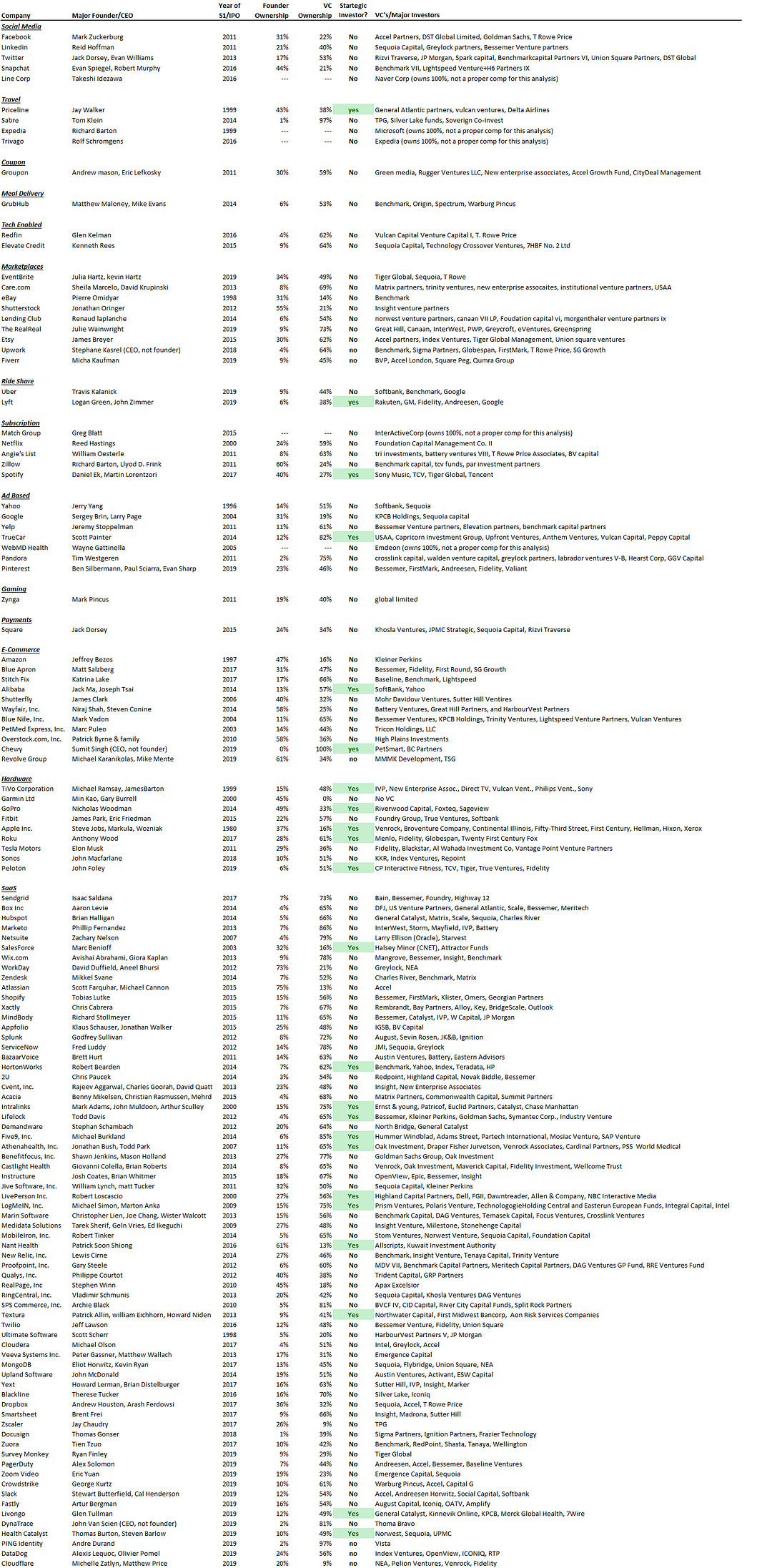Tech founder ownership levels
Snapchat cofounders Evan Spiegel and Robert Murphy owned a combined 44% of Snapchat before it went public. Mark Zuckerberg owned 31% of Facebook, Sergey Brin and Larry Page owned 31% of Google, the founders of Eventbrite owned 35%, and Reed Hastings owned 24% of NetFlix. These are remarkable levels of CEO ownership upon going public/exit, but such high levels aren’t always the case. Glen Kelman of Redfin owned only 4%, the founder of Pandora owned only 2%, the Lyft founders owned 6% combined, and Peloton’s founder and CEO owned 6%. The point is the range of ownership at exit/IPO can be quite wide and is dependent on a number of factors, the primary of which are capital efficiency and the ability to command high valuations during fundraising.
The list below shows founder or CEO ownership of 127 tech companies at IPO. The median level of ownership shown is 15% while the average is 20%.

A few things to consider:
Cash efficiency matters. Businesses that tend to be less cash needy have higher levels of ownership for the founders. For instance, ecommerce and hardware, both of which are sectors which tend to generate cash, had average founder ownership levels of 32% and 27% respectively, which is much higher than the median of the entire data set (15%).
Valuation matters too. Businesses that have a high level of founder ownership, but were very cash inefficient, were able to preserve founder equity because they raised subsequent rounds at very high valuations. Snapchat was a good example. Very few startups have this luxury and it shouldn’t be depended upon to preserve your ownership.
Options & small investors make up ~30%. Both the median and averages of the founders and VC sum to ~70%. That means smaller investors and employees/consultants owned 30% of these businesses at IPO. The lesson there is that small investors will be as important to your success as large investors, especially early on. Additionally, option pools are going to need to be set up along the way and sharing equity with your key employees will be critical to growing a large, IPO-worthy business.
Some VC have the Midas Touch. A number of VC pop up repeatedly in different deals. For instance, Bessemer, Sequoia, Benchmark, Andreesen, Greylock, DST, and Accel are each in multiple deals. There is a reason funds like these can raise billions of dollars, and it’s because of the success of the entrepreneurs they invest in.
There are two ways to maximize founder equity at exit: i) the right way is to be cash efficient and raise as little money as possible to grow the business; or ii) the less common way is to be an incredibly hot startup in a frothy environment so you can raise money at elevated valuations. Depend on the former if you can because the latter can come and go with cycles.
Visit us at blossomstreetventures.com and email us directly with Series A or B opportunities at . We invest $1mm to $1.5mm in growth rounds, inside rounds, cap table restructurings, note clean outs, and other ‘special situations’ all over the US & Canada.